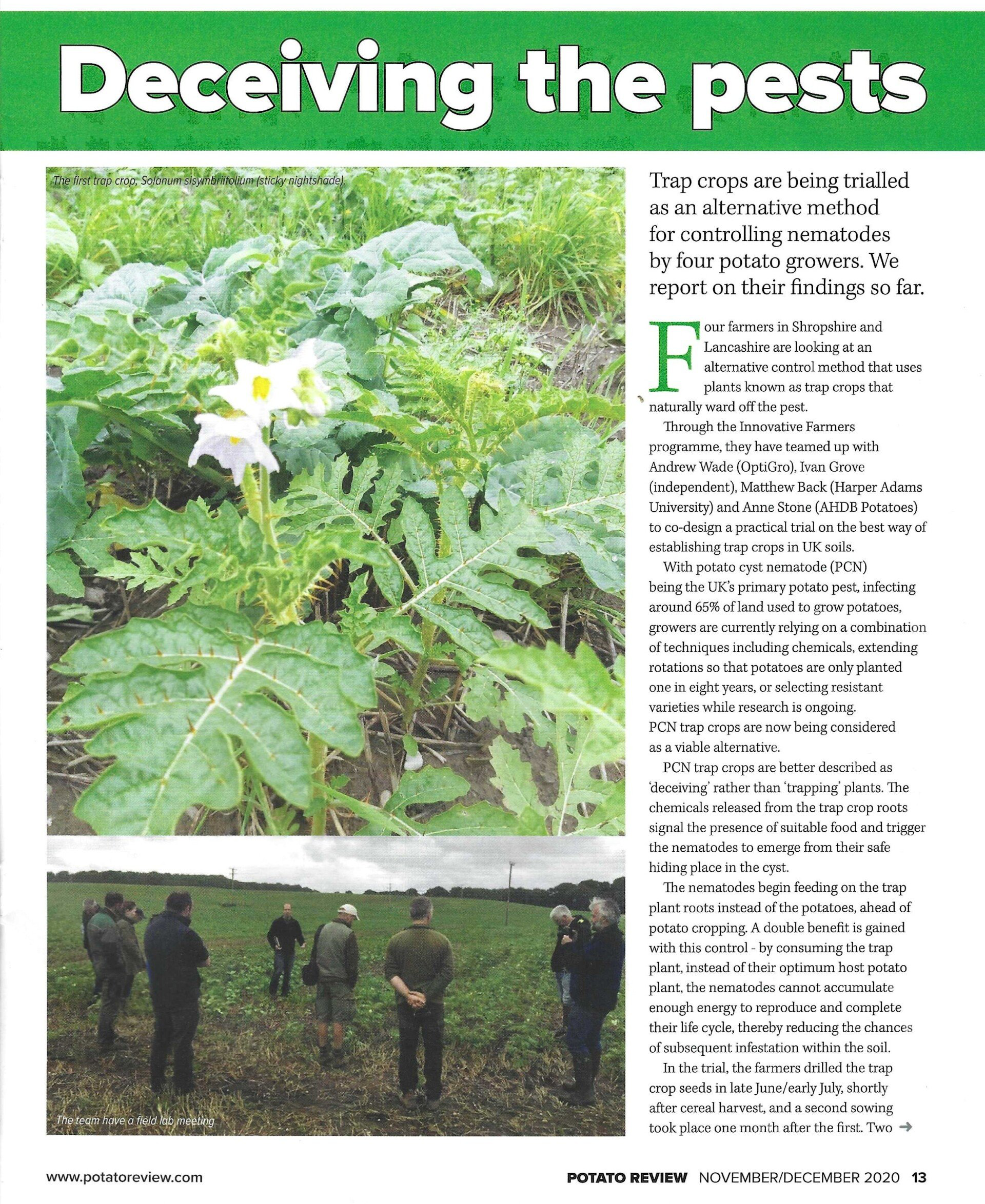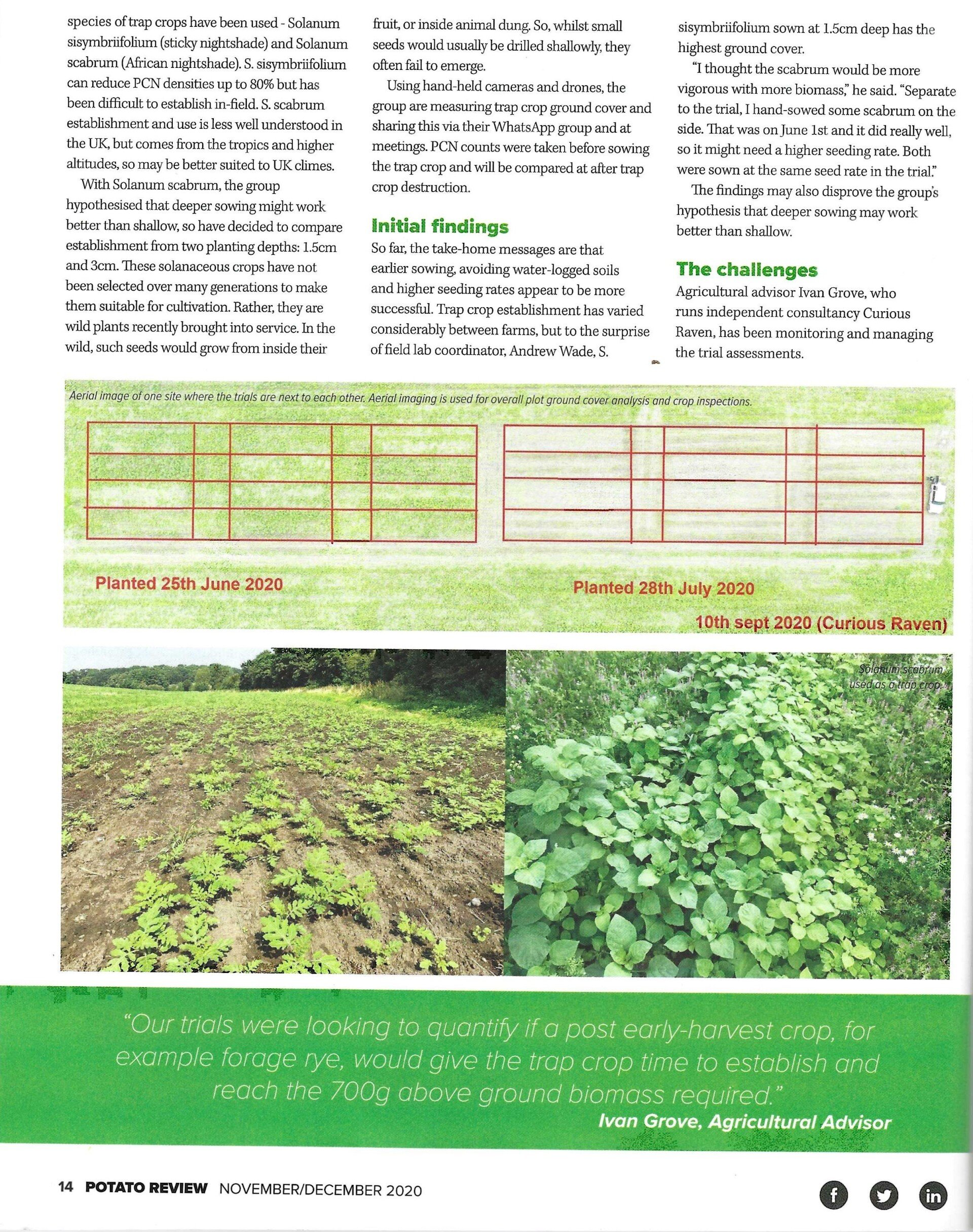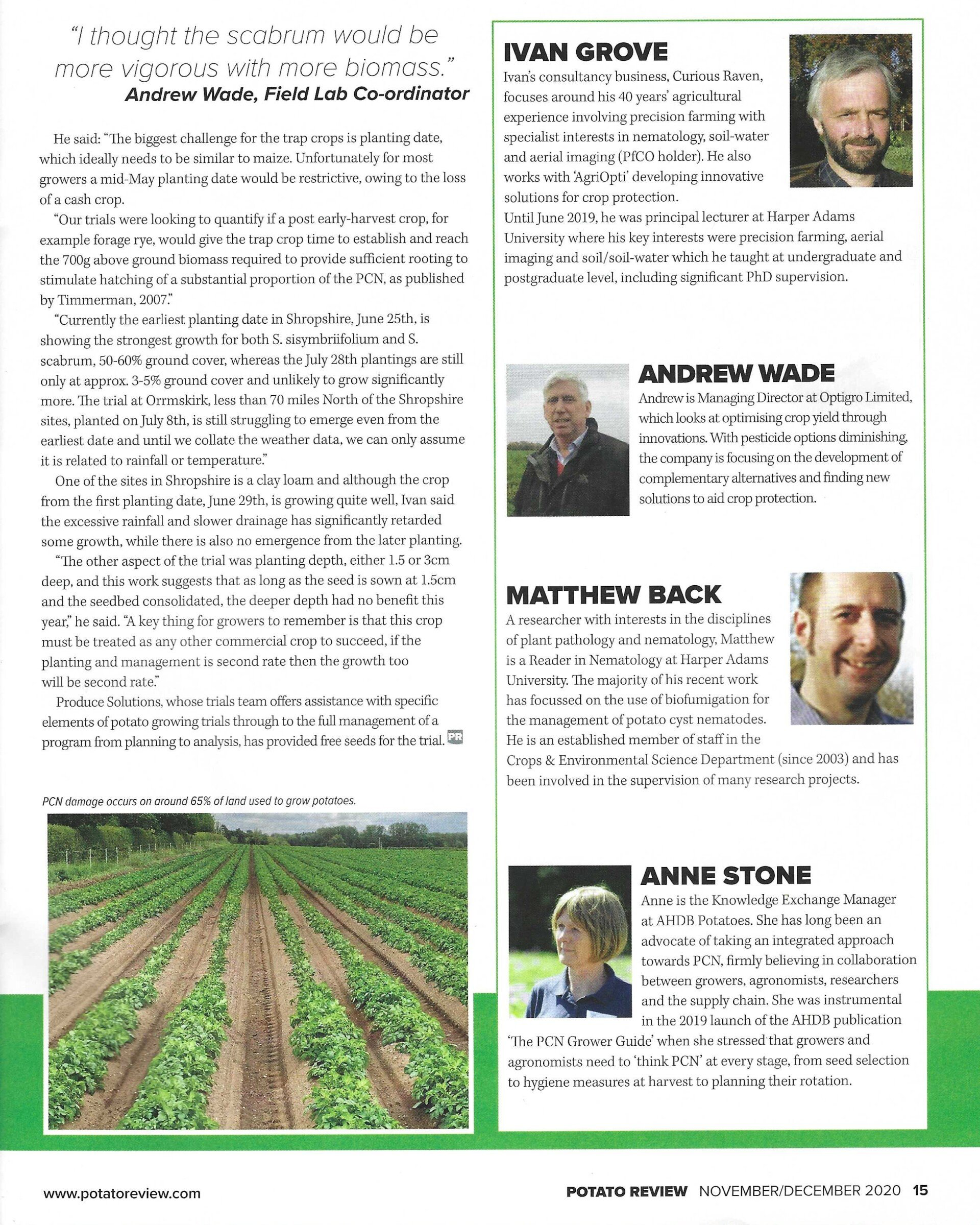Trap Cropping
Trap Crops and PCN
Potato cyst nematodes, PCN, are a significant soil pest of potatoes, with almost half of the UK potato growing land being infested. There are two species of PCN, Globodera rostochiensis and Globodera pallida, both of which can substantially reduce potato yields, especially at high population densities, but with G. pallida being the more problematic. For many years nematicides were used to control or reduce PCN damage, but regulatory changes saw all but a few withdrawn, leaving growers with few other options for PCN control. For G. rostochiensis, there is a good range of resistant potato cultivars from which population reduction can be achieved, but this does not protect the yield of the growing crop unless the cultivar is also ‘tolerant’ of attack. For G. pallida, the dominant species, few fully resistant cultivars are available, leading to a significant problem with few answers, except using rotations of greater than 1 in 7 or biofumigation crops.
Trap cropping for PCN is the growth of a specific crop to protect the important potato crop. These trap crops are also Solanaceae and act in a similar way to PCN resistant potato cultivars, they stimulate PCN hatch but then prevent the nematode from reproducing, thus lowering PCN population density. There are currently two PCN trap crops available; Solanum sisymbriifolium, sticky nightshade, and Solanum scabrum, a leafy vegetable crop. Published research work by Timmermans (2005) suggests PCN population reductions of between 75 and 85%, but our field-based work in 2021 only produced 85% reductions in some plots, but with averages of 40% for S. sisymbriifolium and 51% for S. scabrum, albeit with low plant populations.
Ideally, these crops should be planted between mid-May to mid-June, but our work has shown that they can be planted towards the end of June, but no later in North Shropshire (see the IF trap crops report). Good establishment of these crops is paramount and current recommendations are sowing to 0.5cm depth, followed by good soil consolidation (rolling) and the application of 75kg N/ha at planting to stimulate early growth. To get the best of these crops they are ideally planted before the next potato crop, as this gives them the longest time to grow, well into early winter and can be ploughed in before the potatoes.
What would this mean to the PCN population if a good trap crop was established:
PCN populations at 20 eggs/g, would reduce to 10 eggs/g at a 50% reduction, and 5 eggs/g at a 75% reduction.
PCN populations at 60 eggs/g soil, would reduce to 30 eggs/g at a 50% reduction, and 15 eggs/g soil at a 75% reduction.
For seed supply & technical advice for growing Trap Crops Contact Andrew:
Andrew Wade
07508024805
Andrew@optigro.co.uk



